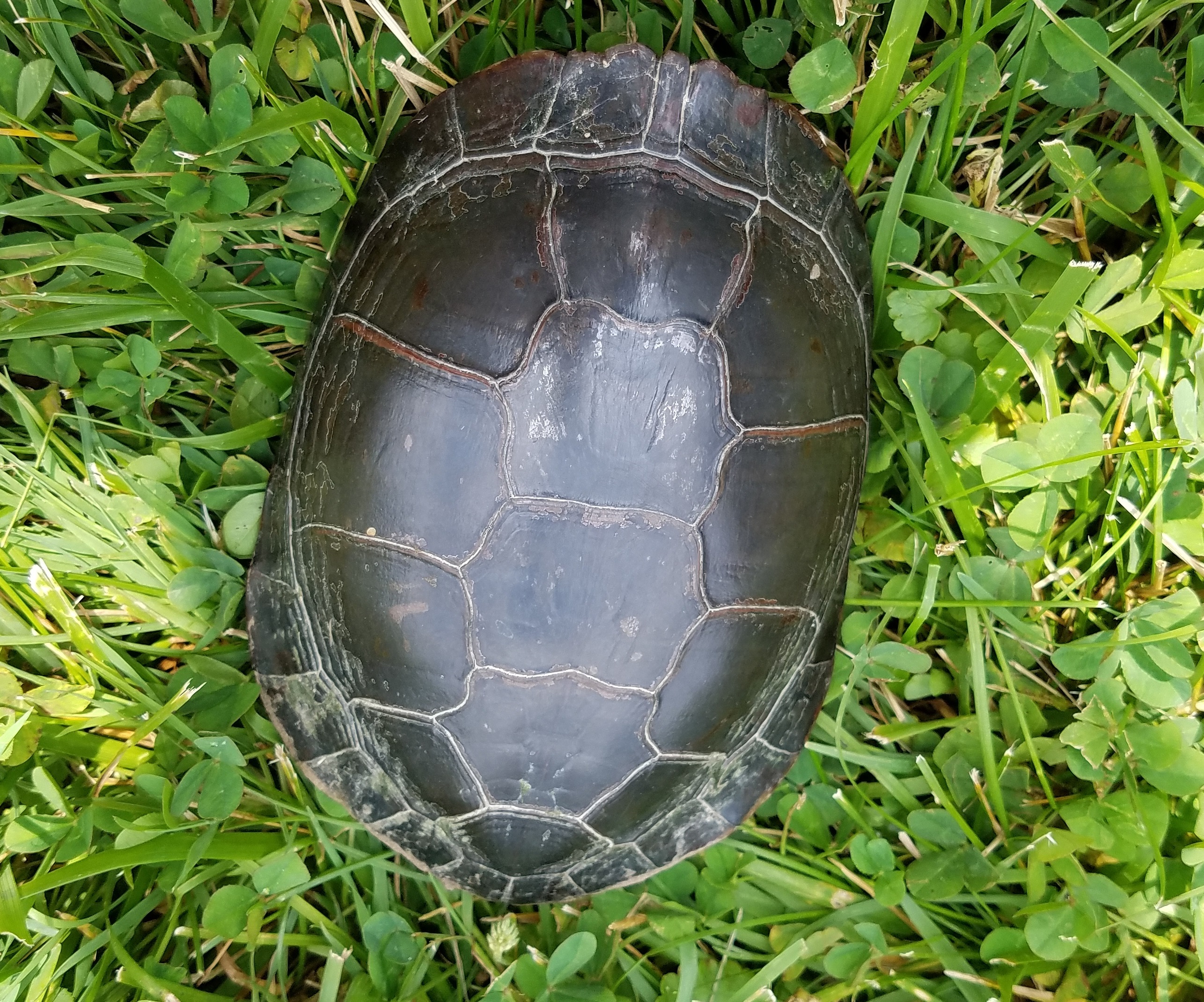Blog

#bioPGH Blog: A Tip-top Turtle
 A resource of Biophilia: Pittsburgh, #bioPGH is a weekly blog and social media series that aims to encourage both children and adults to reconnect with nature and enjoy what each of our distinctive seasons has to offer.
A resource of Biophilia: Pittsburgh, #bioPGH is a weekly blog and social media series that aims to encourage both children and adults to reconnect with nature and enjoy what each of our distinctive seasons has to offer.
Imagine a perfect sunny summer day by pond or a wetland. Insects buzzing by, sparkles of sunlight reflecting off the ripples in the water—and what’s that bump on the log at the edge of the water? If it really is a perfect day, it’s one of the most common turtles in North America—the painted turtle! In spite of (or perhaps because of) their wonderfully strange and prehistoric appearance, turtles have captured imaginations from the days of cave art to crime-fighting ninjas. In honor of our new reptilian residents of Turtle Lagoon by the Center for Sustainable Landscapes, let’s explore the world of some tip-top cool painted turtles!
Before we get started, though, we should establish some turtle biology groundwork. First of all, a common myth surrounding turtles is that they can remove their shell, but this is absolutely not possible. A turtle’s shell, underneath the keratin top layer, is made of bone. This bony shell is fused to a turtle’s ribs, which means they cannot discard their shells any more than we could leave our feet at home. And while we discuss their shells, we can note that the top shell of a turtle is called the carapace, and the bottom shell is called the plastron. As a general rule, turtles that spend more time on land (such as a box turtle) will have a more highly-domed carapace while turtles that are primarily aquatic (like our friend the painted turtle) have a flatter shell to swim more efficiently. While underwater, turtles are indeed holding their breath and do not have gills. Now, on to painted turtles!
Painted turtles can be found across North America—predominantly in the eastern half of the continent and across the northern U.S. and southern Canada, from Maine to Washington and Nova Scotia to British Columbia. Though they can occasionally be found as far southwest as Chihuahua, Mexico, it is not a part of their natural distribution (never release unwanted pets into the wild!) There are four subspecies of painted turtles (eastern, western, southern, and midland) based on their continental distribution, and across their range, painted turtles vary in size from about 5-10 inches long, measuring the carapace.
No matter where you live, the most common way that I’d wager the majority of us have seen a painted turtle is out basking on log. As reptiles, painted turtles are ectothermic, meaning they need an external heat source (like the sun) to maintain their body temperature. During the winter, when heat sources are a bit harder to come by, their metabolism drops and they burrow down at the bottom of the ponds or wetlands they occupy.
As for diet, if you were to ask someone what painted turtles eat, the response would be “How old is the turtle?” Painted turtles undergo what is called an ontogenetic diet shift; this means their diet preferences shift as they grow older (“ontogenetic” is derived from the word ontogeny, a term to describe the developmental stages of an organism.) In the case of our painted turtles, they start out life as carnivores—tracking down protein-rich insects, small fishes, or whatever else they can catch. As they reach adult size, painted turtles shift to a more plant-based diet and favor lily pads, water lily seeds, duckweed, and other aquatic plants. Though the reasoning behind this isn’t certain, there are a few explanations for this. One idea is that when the turtles are young and still growing, a high protein diet would benefit the rapid growth rate of a young turtle. As the turtles age, though, their foraging efficiency might decrease as they become too large to maneuver through the aquatic plants that often harbor the macroinvertebrates they once called dinner. Thus, their potential prey items are no longer worth the energy it costs to catch them.
Our painted turtle in Turtle Lagoon is an adult female—what sorts of plants do you think she eats? You will have to check out the lagoon to see! The next time you visit, watch for her favorite spot on the log that closest to the Center for Sustainable Landscapes. You might see her or our map turtle!

Connecting to the Outdoors Tip: You are most likely to spot a painted turtle near a pond or wetland, possibly in the morning as they bask to warm up from the night. However, as with all wildlife, the best thing we can do for animals is to stay away from them. Turtles may not be able to run away from us, but our presence can be stressful to them—especially when a wild turtle is picked up and handled. Be a wildlife observer!
Continue the Conversation: Share your nature discoveries with our community by posting to Twitter and Instagram with hashtag #bioPGH, and R.S.V.P. to attend our next Biophilia: Pittsburgh meeting.
Resources
Lincoln Park Zoo—What Do Painted Turtles Do in the Winter?
Connecticut DEEP—Painted Turtles
PA Fish and Boat Commission—PA Turtles
Photo Credits: Wikimedia user D. Gordon E. Robertson and Maria Wheeler-Dubas

